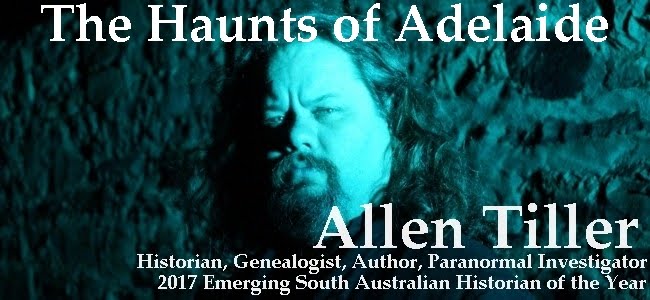 |
| William Crabb - circa 1872 |
Eyre’s site was subject to flooding, so another site further up the Murray was chosen to be surveyed for a township. In 1855, Governor Sir Richard Graves McDonnell named the new river port “Blanchetown” after his wife Lady Blanche McDonnell.
The first families in the region were the Brand family and Crabb family.
One of the first pastoral leases in the area was held by the Crabb family. The Crabb’s had emigrated to South Australia from Plymouth, Devon England on The Java. They arrived in Port Adelaide in 1840. They moved around South Australia to places like Angaston, Truro and North Rhyne, (now Keyneton) before settling in Blanchetown in the late 1850s.
The Crabb’s took to catching and taming wild horses in the area on Craig’s Plains below Accommodation Hill.
Being close to the Blanchetown port allowed the Crabb's to export their goods and profit from their land. The Crabb’s also ran sheep, cattle and their own horses, with their boys growing up to be well-known boundary riders and stockmen in the region.
William and his wife Mary Anne (nee Chinner) had nine children. In time, those children married and the family grew. There were 18 members of the Crabb family living in Blanchetown in the 1870s, which made up a significant portion of the population of the then tiny town.
 |
| Crabb Reservoir - located halfway between Crabb's Old Accommodation House and the Annadale Halfway House on the Sturt Highway. |
The 1865 drought killed much of the Crabb’s cattle stock and their property had to be sold. William Crabb instead built the first hotel in the area, known locally as Crabb’s Halfway House, and later as Crabb’s Old Accommodation House, which was located on the track from Truro to Blanchetown (now the Sturt Highway). His hotel was first licenced in 1865 and almost closed a year later when Crabb was late with his application to the Magistrates board.
He appeared in person to plead his case and stated that; “I did not send in my application in time because I had made up my mind to leave the house, but was afterwards induced to apply for a renewal of the licence in consideration of the accommodation the house afforded the public. I have kept it eight years and have sunk a considerable amount of money there.”
His license was renewed by the board.
William Crabb ran his hotel until 1873 when he decided to shut up shop and sell off all the internal furnishings. He then invested in the nearby station Roonka Roonka, and Hampton station. This investment proved profitable for the Crabb’s, with William beginning trade in wool-buying and wool-scouring, which was earning him over 1000 pounds a year.
In 1881, Crabb’s Halfway-House is mentioned in many local newspapers as the nearest point to a
 |
| Newspaper advertisement for the sale of goods from Crabb's Hotel |
William and Mary had rushed from their home upon hearing the explosion and watched a 1.5 metres (5 foot) high tsunami travel across the Murray River and submerge a small island in their view. After inspecting the cliff, they discovered one massive 12-metre-tall (40-foot) tree over 3 metres (12 feet) away from where its roots sat.
The Crabb’s rented out their former hotel for a short time before it fell into the ruins that remain today.
William and Mary Crabb are buried in a little cemetery not far from Blanchetown. In the same cemetery are the final resting places of James Brand, James Rossiter and his wife.
During the 1960s 165 skeletons of indigenous human remains were found in the sand dunes on the Roonka Roonka station property which led to an archaeological dig in the area. The oldest remains have been carbon dates as 8,000 to 7,000 years B.P (B.P. meaning “Before Present” 1950)
Researched and written by Allen Tiller © 2019
References
1866 'BENCH OF MAGISTRATES.', The Adelaide Express (SA: 1863 - 1866), 11 September, p. 5. , viewed 03 Jan 2019, http://nla.gov.au/nla.news-article207679872
1874 'COUNTRY CORRESPONDENCE.', South Australian Register (Adelaide, SA : 1839 - 1900), 5 January, p. 7. , viewed 03 Jan 2019, http://nla.gov.au/nla.news-article39814195
1881 'COUNTRY NEWS, COUNTRY LETTERS.', Adelaide Observer (SA: 1843 - 1904), 26 November, p. 37. , viewed 03 Jan 2019, http://nla.gov.au/nla.news-article160151381
1881 'LANDSLIP ON THE MURRAY.', Adelaide Observer (SA: 1843 - 1904), 12 March, p. 15. , viewed 03 Jan 2019, http://nla.gov.au/nla.news-article160142338
1881 'SANDLETON, November 16.', South Australian Register (Adelaide, SA: 1839 - 1900), 22 November, p. 2. (Supplement to the South Australian Register.), viewed 03 Jan 2019, http://nla.gov.au/nla.news-article47087005
1884 'ANNA. JUNE 23.', South Australian Register (Adelaide, SA: 1839 - 1900), 26 June, p. 3. , viewed 03 Jan 2019, http://nla.gov.au/nla.news-article43661923
1894 'No title', The Laura Standard (SA: 1889 - 1917), 23 November, p. 2. , viewed 03 Jan 2019, http://nla.gov.au/nla.news-article191007579
1903 'OBITUARY.', Chronicle (Adelaide, SA: 1895 - 1954), 3 October, p. 35. , viewed 03 Jan 2019, http://nla.gov.au/nla.news-article87871091
1939 'Blanchetown in the Seventies', Murray Pioneer and Australian River Record (Renmark, SA: 1913 - 1942), 14 December, p. 12. , viewed 03 Jan 2019, http://nla.gov.au/nla.news-article109250178
Leadbeater B (1996) South Australian Shipping & Immigration, Family History SA, retrieved from http://www.familyhistorysa.info/shipping/passengerlists.html
Prokopec, Miroslav & L Pretty, Graeme & Smith, Patricia. (1994). Australian aboriginals: prehistoric South. Variab Evol. 4.

No comments:
Post a Comment